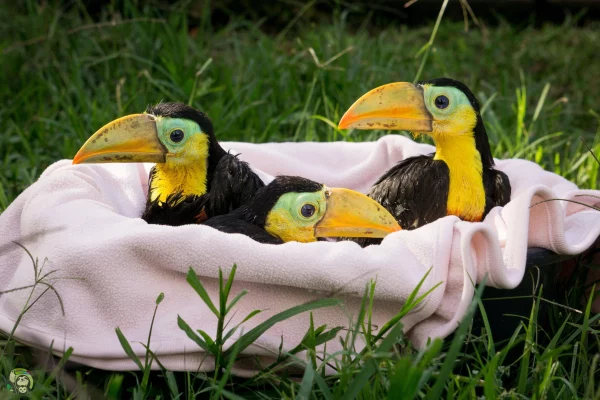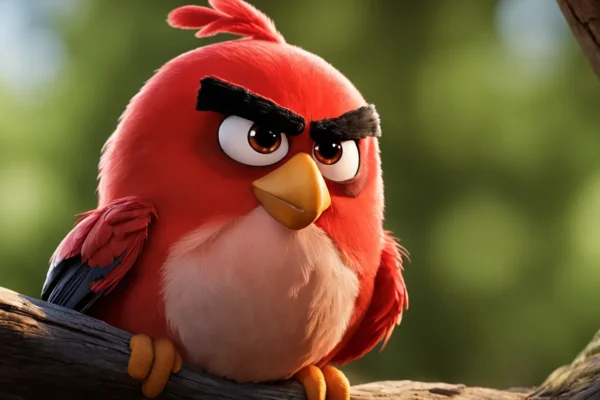The golden pheasant, also known as the Chinese pheasant, stands out as one of the world’s most beautiful birds. This avian gem, scientifically termed Chrysolophus pictus, is highly prized among aviculturists, primarily for its dazzling and vibrant plumage. Originating from the mountainous regions of China, the golden pheasant boasts not only stunning aesthetics but also a resilience to cold climates, adding to its allure. Let’s explore 31 fascinating facts about this exotic breed.
All You Need to Know About Golden Phesents
The Latin and Common Names of the Golden Pheasant
Scientifically known as Chrysolophus pictus, the golden pheasant is part of a larger group comprising 175 species or subspecies of pheasants. Among its common names are Chinese pheasant, golden pheasant, and painter pheasant. When held in captivity, it is often referred to as the red golden pheasant.
Appearance of the Golden Pheasant
In typical bird fashion, the male golden pheasant steals the show with its vibrant hues, resembling a canvas where a child enthusiastically used all their favorite crayons. Females, on the other hand, exhibit a more subdued brown tone with a mottled pattern and a lighter head.
The male’s striking features include a golden head, a red-tipped crest, and a vivid scarlet breast. The “cape” or ruff is cinnamon with dark edges, giving it a striped appearance.
Additional color highlights include a green upper back, dark brown and bluish wings, and a golden rump. The tail showcases barred patterns in light and dark brown.
Their eyes, beaks, and feet contribute to the color symphony with a pale yellow hue.

Dimensions of the Golden Pheasant
Golden Pheasant Size
The male golden pheasant boasts an average length of 43-44 inches, while females measure around 26 inches. Notably, two-thirds of their length is attributed to their magnificent tail.
Golden Pheasant Weight
Weighing approximately 630 grams (1.4 lbs), the golden pheasant maintains a moderate weight.
Spread of the Golden Pheasant’s Wings
The wingspan of the golden pheasant spans about 70 cm or approximately 27.5 inches.
The Flight Capabilities of Golden Pheasants
Golden pheasants possess the ability to fly, albeit clumsily. Their flight is limited to short, swift bursts due to their long tails and short wings. Running fast is more within their expertise.
Aggression Myth of Golden Pheasants
While not particularly aggressive to non-competing species, golden pheasants can be tamed with patience. Instances of aggression, usually exhibited by male birds towards hens, are rare and thankfully uncommon.
The lifespan of Golden Pheasants in the Wild and Captivity
In the wild, survival rates are challenging, with two-thirds not making it past 6 to 10 weeks. A mere 2-3% may reach three years. In captivity, with proper care, golden pheasants can live up to 15 years, and some have even been known to reach the age of 20.
Golden Pheasants as Companions
While enthusiasts vouch for their suitability as pets, a golden pheasant requires a substantial living space, with at least 20 square feet per bird. Netting over the pen and secure fencing are essential to prevent escape attempts.
Known for their propensity to fly away, golden pheasants demand careful handling. Starting with hatchlings, dedicating time, and using unsalted peanut pieces for positive reinforcement can contribute to successful taming.
Beginner-friendly, hardy, and adaptable to various climates, golden pheasants can make impressive companions, sure to leave a lasting impression on friends and enthusiasts alike.
Golden Pheasants as Pets
Golden pheasants, while not demanding vast spaces, are known for their liveliness and energy. Those who have experienced owning them often describe it as an addictive endeavor, and soon enough, a delightful flock of these birds might fill your space.
As long as their basic needs are met, golden pheasants can be wonderful pets, offering companionship and a touch of vibrant beauty to your surroundings.

Golden Pheasants Through the Ages
The tradition of keeping golden pheasants in captivity dates back to at least the 1700s in their native China. Across the ocean, in America, the first mention of these captivating birds in captivity was recorded in 1740. Some historical accounts even suggest that George Washington had them at Mount Vernon.
Legend weaves tales of the golden pheasant’s presence in Europe during the Argonauts’ Golden Fleece quest around 1,000 years BC.
Golden Pheasants and Chickens
Mixing golden pheasants with chickens is not advisable. Chickens, while immune to certain diseases, can carry them without harm. Pheasants, however, lack immunity and may succumb to these illnesses. It’s crucial to avoid housing golden pheasants in areas previously occupied by chickens. Additionally, caution is advised when placing them near grouse, known for their tendency to bite off the upper beak of pheasants.
Eating Golden Pheasants
While it’s technically possible to consume golden pheasants, they are more valued for their aesthetic appeal than their culinary qualities. Breeding pairs often command high prices, and the meat, resembling wild pheasant, tends to be lean and can be dry. Some recommend adapting chicken or game bird recipes, with braising as a suggested cooking method. The taste may vary depending on the bird’s diet, and opinions on the flavor range from appreciative to less favorable, with one describing it as reminiscent of “dirty socks smell.”
Notably, there’s also a cocktail named after the Golden Pheasant, consisting of eggs, sugar, vodka, lemon juice, and cream soda.
Consuming Golden Pheasant Eggs
Golden pheasant eggs, akin to duck eggs but less rich and with a slightly gamey flavor, are edible.
Threats to Golden Pheasants
Golden pheasants face threats from various predators, including humans, dogs, foxes, wildcats, and other birds. Additionally, smaller creatures may target their eggs.
Conservation Status
As of now, the golden pheasant holds a conservation status of “Least Concern.” While the population is experiencing a decline, it is not significant enough to categorize the species as “Vulnerable.” However, the ongoing challenge of deforestation poses a threat to their habitat, emphasizing the need for conservation efforts to ensure the continued existence of these captivating birds.
Golden Pheasant’s Ideal Living Spaces
Golden pheasants thrive in dense, shady woodlands and forests with sparse undergrowth found in the mountainous regions of Asia. These vibrant birds prefer habitats where the sunlight is not too harsh, as prolonged exposure can fade their intense colors. While they are primarily ground-dwelling foragers during the day, diligently pecking for seeds, berries, and vegetation, they choose to roost in tall trees at night. Conifer forests are particularly favored by these magnificent creatures.
Beyond their native China, golden pheasants have formed feral populations in various parts of the world, including the UK, Europe, North and South America, Australia, and New Zealand.
Diet of Golden Pheasants
Golden pheasants are meticulous foragers, navigating the forest floor with a deliberate pace as they search for sustenance. Their diet is diverse, encompassing seeds, berries, grains, and various vegetation such as rhododendron and bamboo shoots. In addition to plant-based fare, they relish grubs, spiders, and insects. The golden pheasant typically engages in its feeding routine during the early morning and late afternoon.
The Mating Habits of Golden Pheasants
Contrary to the concept of monogamy, golden pheasants do not mate for life. In the wild, a male may engage with multiple hens. In controlled breeding environments, roosters may be provided with harems comprising 10 or more hens, depending on available space and conditions.
The Dance of Courtship
The mating ritual of the golden pheasant is a captivating display of courtship. When a female responds to the male’s crowing, he embarks on a vibrant performance. Strutting around and fluffing his ruff, the male seeks to captivate the female’s attention. If the female shows signs of disinterest and begins to leave, the persistent male runs circles around her, attempting to block her departure. When she halts, the male enters full display mode, showcasing his gold-rimmed cape, splendid tail, and captivating rump to convince her of his suitability as a mate. This elaborate dance is a testament to the beauty and intricacy of nature’s courtship rituals.
When Do Golden Pheasants Find Love?
In the world of golden pheasants, the ladies are quick to mature, becoming ready for romance at the tender age of one. Meanwhile, their male counterparts may achieve fertility at one year but reach full maturity at the age of two.
When and Where Golden Pheasants Build Their Homes
Come April, the season of love and nesting begins for golden pheasants. These vibrant birds construct their nests on the ground, selecting spots like tall grass or dense bushes where the female’s natural coloring provides effective camouflage. The nest, a shallow depression lined with grass and vegetation, serves as the incubation chamber for a clutch of five to twelve eggs. The attentive mother diligently sits on the eggs, relying on dew and raindrops for sustenance until the light beige eggs hatch in a little over three weeks.
The Charming Appearance of Golden Pheasant Chicks
Golden pheasant chicks make a cute entrance into the world, covered in reddish-brown and buff-colored down. These precocial youngsters, born relatively mature and mobile, promptly follow their mother, pecking for food from the moment they hatch.
When Golden Pheasant Chicks Fledge
Around the age of two weeks, golden pheasant chicks undergo fledging, a crucial stage marked by the development of wing feathers suitable for flight.
Determining the Sex of Golden Pheasant Chicks
To discern the gender of golden pheasant chicks before they reach maturity, one can inspect their eyes. While both sexes start with brown eyes, females retain this hue, whereas the males’ eyes gradually transition to bright or pale yellow, sometimes approaching white. The stages of a pheasant’s life include being a chick, a juvenile from 6 to 12 months, a yearling from 1 to 2 years, and finally, a breeder at over 2 years of age.
The Distinctive Call of the Golden Pheasant
The golden pheasant’s vocal repertoire is often described as a rhythmic “chack chack,” with males showcasing a metallic call during the mating season. Experience their melodic sounds [here](insert link).
Superstitions Surrounding Golden Pheasants
According to some beliefs, capturing a golden pheasant grants the captor three wishes. In Chinese culture, these stunning birds are considered symbols of prosperity and good luck.
The Golden Pheasant’s Crossbred Companions
Golden pheasants frequently intermingle with Lady Amherst Pheasants, resulting in offspring with olive-colored feet, distinguishing them from their pure golden counterparts. Another variation, the yellow golden pheasant, lacks the vivid reds, blues, and greens, often referred to as “Red” in captivity.
Where to find Golden Pheasants
Originating from the forests of western China, golden pheasants have spread their wings across the globe. Feral populations exist in various countries, including the United Kingdom, Canada, the United States, Mexico, Europe, and South America.
Due to their striking plumage, golden pheasants are favorites in zoos and aviaries worldwide. You may also encounter them through local pheasant breeders, who may happily showcase their vibrant stock while sharing insights about these enchanting birds.
Share Your Experience: Golden Pheasants in Your World
Have you had the pleasure of encountering a golden pheasant? Which fact fascinated you the most, or did we miss any interesting details? Join the conversation in the comments below!






One thought on “Golden Pheasant Facts: All You Need to Know”